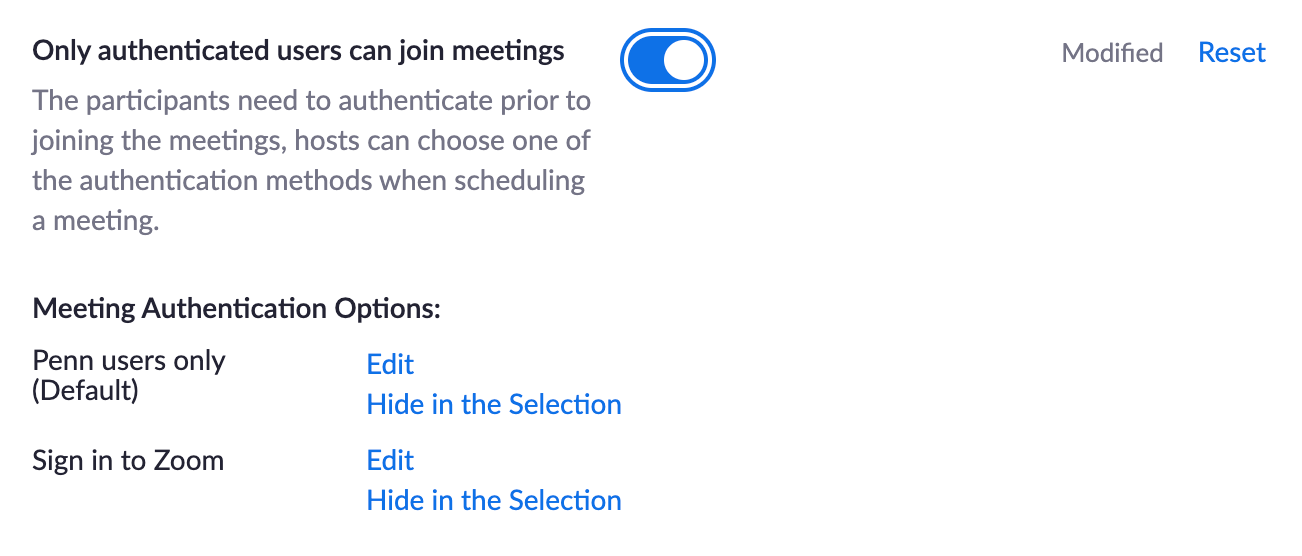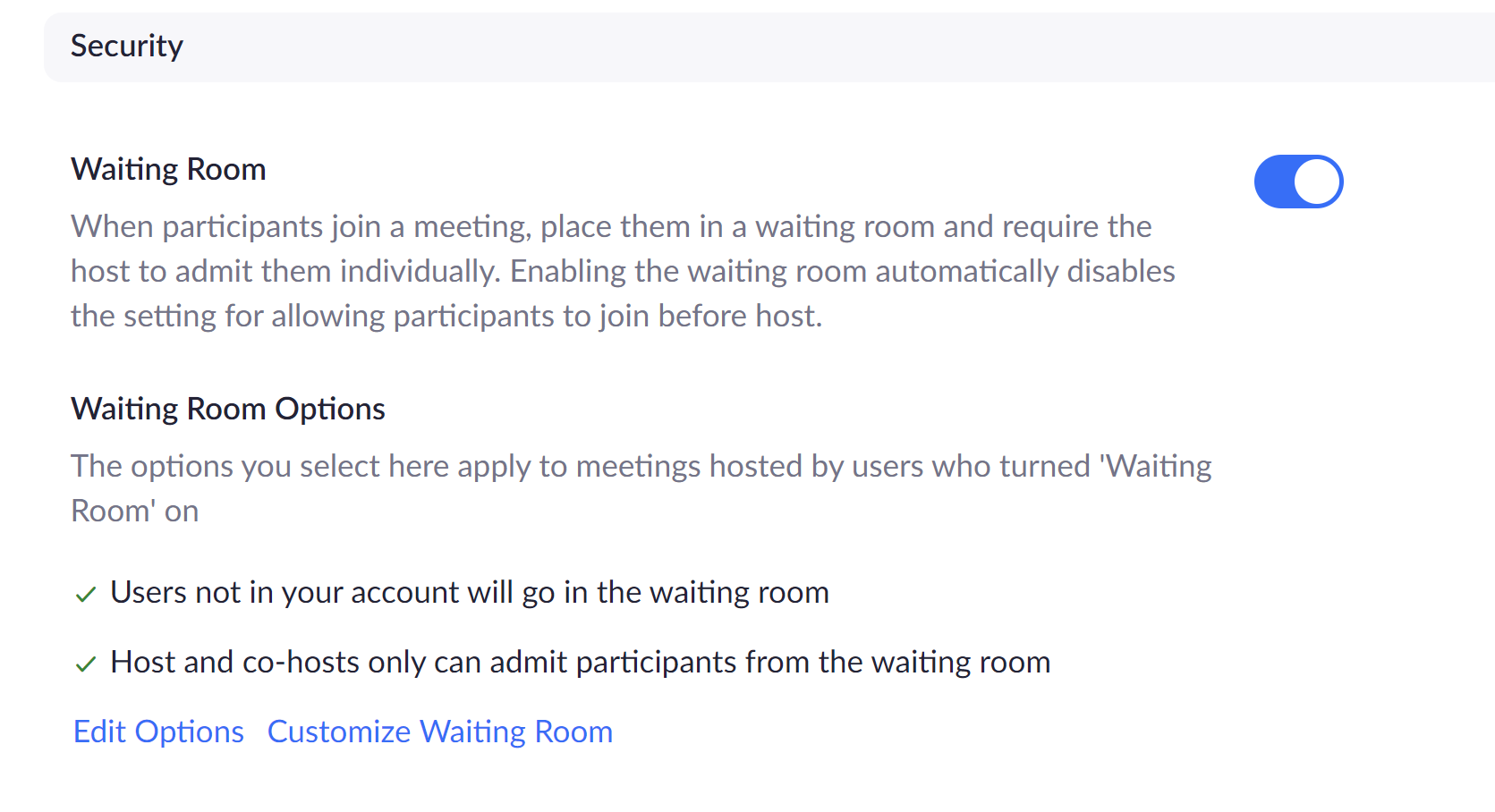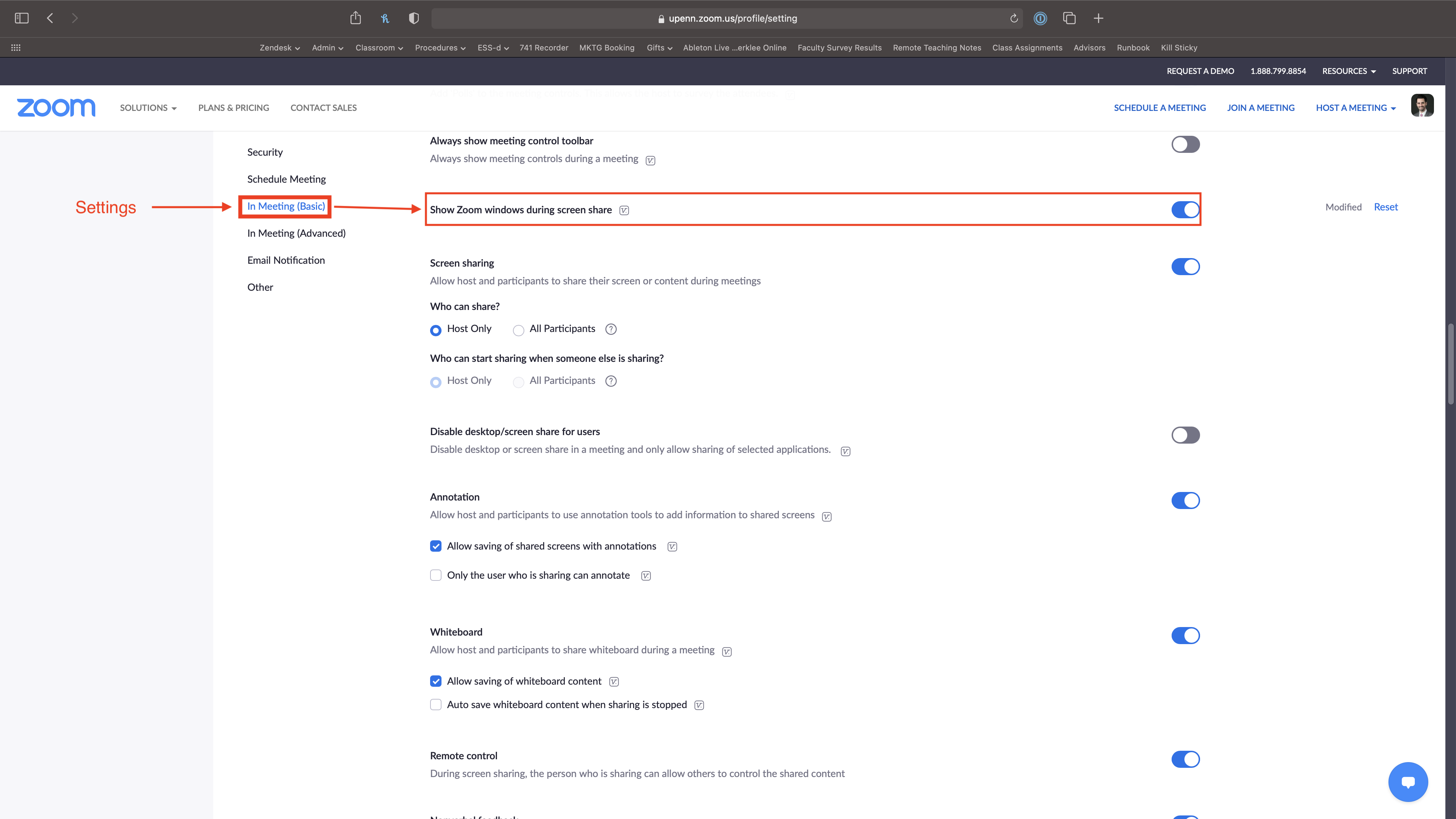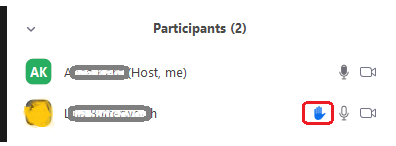Questions and troubleshooting tips that will help you use Zoom meetings at Wharton.
Some early adopters at Wharton created Wharton Zoom accounts, but now the accounts are managed by Penn. If you still have a Wharton Zoom account you should migrate it to Penn's instance.
Accessing Zoom
Setting Up
- Internet Connection: We recommend at least 10 Mbps/download
speed and 5 Mbps/upload speed. Use fast.com to determine your internet speed.
- Browser/Client Requirements:
- Latest version of the Zoom Desktop Client or Mobile App.
- For web client, see minimum browser requirements
- Account needed?
- To participate in a meeting, NO account is needed.
- To schedule or moderate a meeting: log in with your PennKey at upenn.zoom.us or launch the app.
- See Zoom's support site for directions on downloading and using the Zoom client.
If you have a non-Intel Mac (M1, M2), you will need to use the Apple Silicon version of Zoom which you can download here.
Ways to Join
- Client v. Web: Check this link to compare the benefits of the desktop client, app, and web client experience.
- Joining with multiple devices: You can only log in with one of each kind of device; see Zoom's article for more information.
About Meetings
- Who Can Join a Meeting: Anyone who is invited or has the link can join a meeting.
- Transcriptions/Captioning: Live Automatic transcriptions are available through Penn's Zoom account.
Meeting Capacities
- Participant Limit: You can have up to 300 participants in one meeting.
- Maximum Meeting Length: 24 hours.
- Gallery View: 50 (including your video preview) if you meet the hardware requirements.
- Breakout Rooms: 100 breakout sessions can be created, either pre-assigned ahead of time or randomly assigned in real time. More about the participant experience here.
- Large Meeting Capacity: Up to 1000 (requires Add On).
- Webinars: Up to 3000 (requires Add On).
Using Zoom
Managing Meetings
- Scheduling Meetings (Faculty): Please visit Video Conferences for Instruction to learn how to schedule a Class Meeting through Canvas.
- Scheduling Meetings (All Users): Please visit Video Conferences to learn how to schedule meetings
- Breakout Sessions: Please see Video Conference Features for more information.
- Security: Users can restrict a meeting to anyone authenticated to a upenn.edu email address by visiting upenn.zoom.us, going to Settings > Meeting > Security and turning on "Only authenticated users can join meetings."
 Note: If you choose this security setting, make sure to enable Waiting Rooms (Settings > Meeting > Security) so participants who may not have a upenn.edu address can be manually admitted to the meeting. Waiting room options can also be configured so only users not in your account will encounter them.
Note: If you choose this security setting, make sure to enable Waiting Rooms (Settings > Meeting > Security) so participants who may not have a upenn.edu address can be manually admitted to the meeting. Waiting room options can also be configured so only users not in your account will encounter them.
Features
Attachments in chat: This setting is disabled in Penn Zoom.
Creating Zoom polls: Once you have created a meeting in Canvas, click on the meeting title, scroll down to "Poll", and download the csv template. You can customize that template and upload it, right in that same section.
Poll Everywhere: Meeting participants can only see embedded Poll Everywhere slides in powerpoint (when in slide show mode) if the presenter shares their entire screen. See Penn's Canvas article on Poll Everywhere for more information.
Note: Penn's subscription to the Poll Everywhere software is currently only available to faculty as a tool; students who would like to set up polls should try an alternative solution such as Google Forms, which is available via students' Wharton Google account.
Screen share Zoom: Before a meeting in which you want to screen share your Zoom application, visit upenn.zoom.us and go to Settings > In Meeting > Basic and allow "Show Zoom windows during screen share."
Raise Hand: Students can use the Raise Hand feature to indicate they have a question. An easy way to monitor who has their hand raised is to keep an eye on the Participants list, where the hand will show up.
Closed Captioning: You can set your account to enable closed captioning for your meetings. Once this has been enabled, you and your attendees can turn on captioning on a per-meeting basis.
Zoom Reporting:
- Log in to http://upenn.zoom.us.
- In the left-hand column, under “Personal" (or "Admin," depending on the access) click on Reports.
- Click on the report that is called either User or Active Hosts.
- Locate the meeting you wish to download the attendance report for. Towards the right-hand side, click on the number in the Participants column for that meeting.
- Check Export with meeting data.
- If you check “Show unique users,” the report will combine multiple sessions for the same person. Note, the specific “join” and “leave” times will be replaced with the total number of minutes each person spent in the meeting.
- Click on Export.
Recordings
See also Zoom Recordings
Zoom Recordings Autodeleted after 121 days
Penn Zoom stores cloud recordings of meetings for 120 days after their creation. Cloud Recordings are automatically deleted after 120 days (so their 121st day of existence). More information about Penn Zoom recordings can be found here.
Zoom Records for meetings scheduled via Canvas
Zoom meetings scheduled via Canvas and recorded are automatically uploaded to the Class Recordings tab (Panopto) in Canvas. Backup copies of Zoom recordings initiated through Canvas are removed from PennZoom once the recordings have been moved to Canvas. Course instructors will still be able to access Zoom recordings in Canvas, provided that they were scheduled using Canvas for the whole class.
Class Recordings: Recordings of Zoom meetings scheduled through Canvas and set to record in the meeting will automatically be uploaded to the Class Recordings tab of the Canvas site they were scheduled in. The upload in Class Recordings will include captions/audio transcript (if enabled in the meeting), Screen-shared content, chat, and both the gallery and speaker views. Included are breakout rooms, reactions/hand-raising, and polls.
Breakout Room recordings: Breakout Rooms can only be recorded manually by someone in the breakout room, no matter how the Zoom meeting was scheduled (via Canvas or not).
See Zoom's instructions for general information for creating Zoom recordings. More information on recordings at Wharton will be added to this document, so please check back.
Error Messages and Troubleshooting
Audio/Video Problems
For problems with audio or video quality, try these options
Screen Sharing
If "Optimize Screen Sharing for Video Clip" is greyed out, the Host must allow only one person to share a screen at a time, rather than multiple.
Black screen while Screen Sharing
If you're seeing a black screen when screen sharing enable "Use TCP connection for screen sharing" in the Advanced Screen sharing settings of your desktop client.
Authentication and Account Errors
Contact our support team for further help.
No Meetings Listed in Canvas
If you're logged into Canvas and click on the Zoom tab but don't see any meetings listed there are two potential reasons:
- Your professor didn't schedule any Zoom meetings as of yet.
- You're accessing Canvas via a link other than https://canvas.upenn.edu.
To solve this first log into Canvas via https://canvas.upenn.edu. If the Zoom tab still doesn't have any meetings in it, check with your professor.
Zoom Webinars
Livestream to YouTube: This is enabled by default for all Penn Zoom users.
Record and post online: Once you record the session, it gets stored on your Penn Zoom account. It can be downloaded then uploaded to YouTube or other sites.
Upgrade to 500 through 3000-person webinars: We would have to purchase a net new add-on license. Rates can be found on ISC's website https://www.isc.upenn.edu/pennzoom-rates.
More Resources
You can find a user guide that contains information for how to use this service at https://support.zoom.us/hc/en-us or contact a Wharton Computing IT Representative



